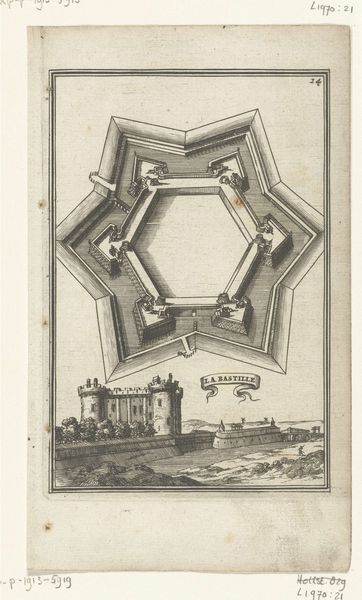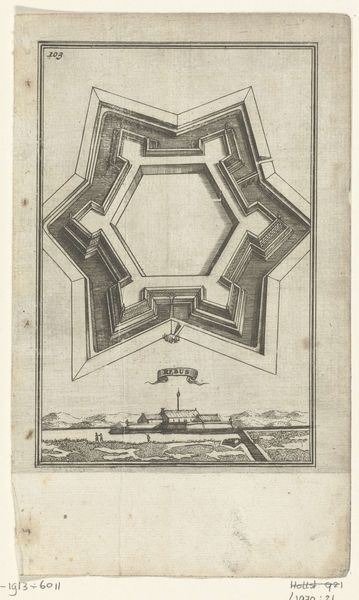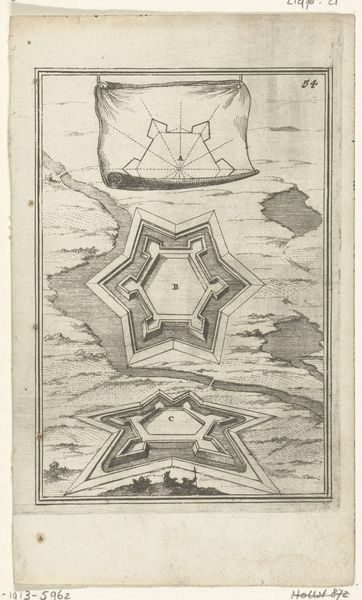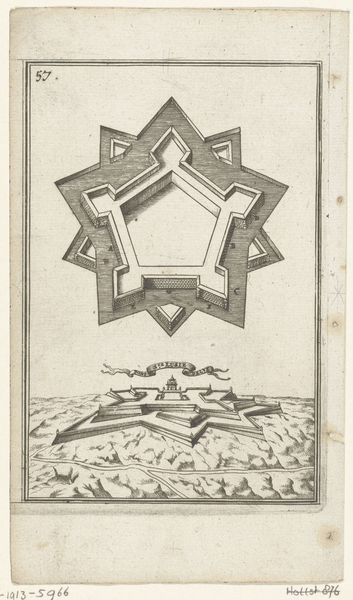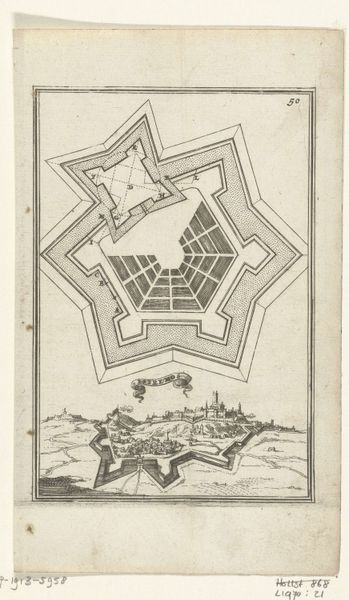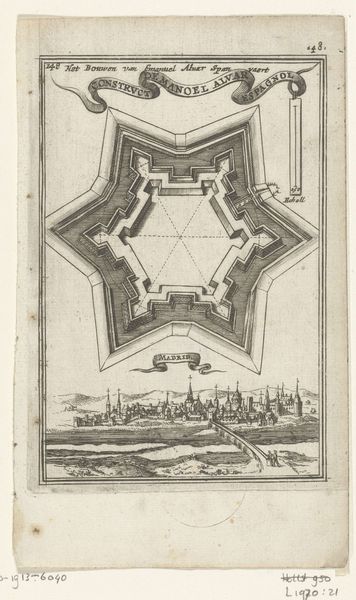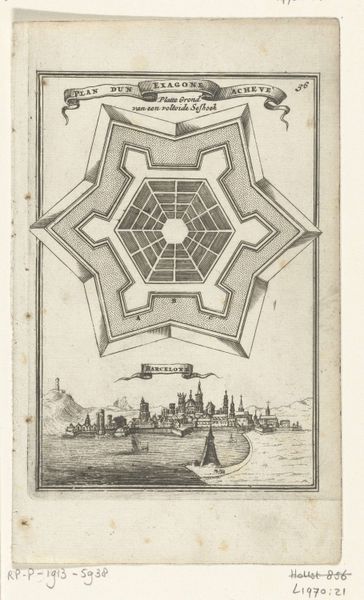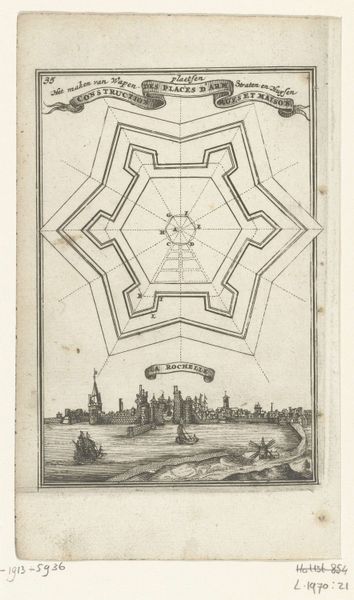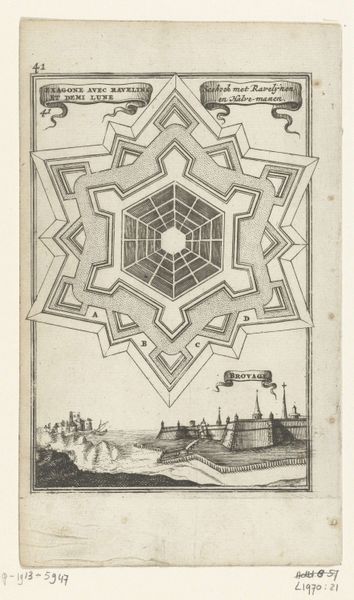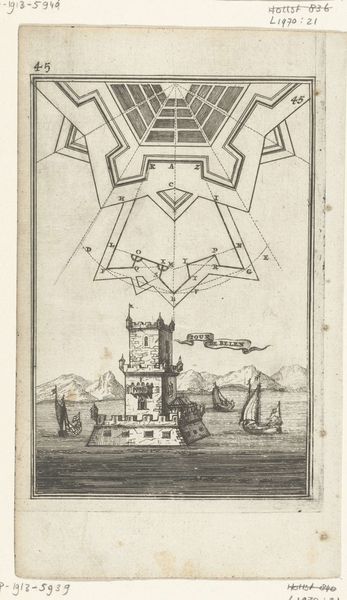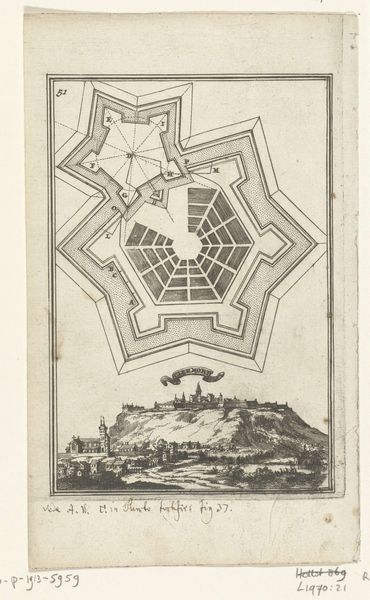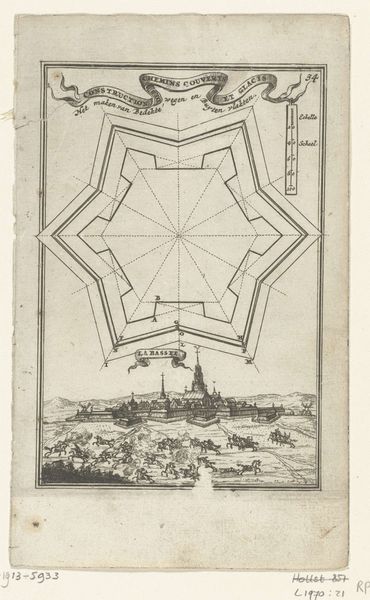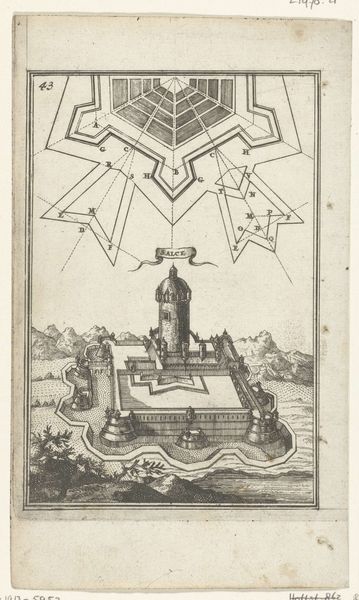
Illustratie voor 'Den Arbeid van Mars' van Allain Manesson Mallet 1672
0:00
0:00
print, engraving
#
baroque
# print
#
landscape
#
river
#
cityscape
#
history-painting
#
engraving
Dimensions: height 185 mm, width 108 mm
Copyright: Rijks Museum: Open Domain
Curator: Here we have an intriguing engraving from 1672 by Romeyn de Hooghe, titled "Illustration for 'The Labour of Mars' by Allain Manesson Mallet." It resides here at the Rijksmuseum. Editor: It's certainly stark, isn't it? That star-shaped fortress design dominates everything, feels very schematic and, I don't know, a bit bleak. Curator: That star fort is the real subject; part of Mallet’s treatise on warfare, illustrating a contemporary model for military fortification. Consider the rise of these designs during the early modern period— a visual representation of centralized power and strategic control. Editor: Right, but look closer. It's not just lines on paper. This is intricate labor; the density of the engraving lines must have taken incredible patience. It’s meant to portray engineering, yet the making itself involves a whole different set of skills. Curator: Absolutely. The print medium democratizes access to this sort of knowledge, circulating ideas about military science and statecraft amongst a wider audience than before. The visual language, the geometric precision...it conveys a sense of order and mastery, very much in line with Baroque aesthetics. Editor: But that precision also flattens the reality of warfare. Look at the landscape below – a tiny, vulnerable city under the shadow of this monstrous geometry. The print simplifies complex relationships of power into these neat, definable edges. We consume images like these to become complacent. Curator: Indeed. This piece can tell us a lot about the complex relationships between war, technology, and representation in the 17th century, how power literally structured the physical landscape, how information was controlled and circulated through print culture. Editor: The engraving speaks volumes about the tools and labor required to both wage and visualize war during that era. I'm drawn to thinking about the artisan who made it and what they thought of these applications of geometrical forms and how they touched upon society. Curator: Well, reflecting on its public role and visualizing social political contexts in Europe opens our minds to a complex story within this print. Editor: Yes, and understanding the materials and labor involved give us another powerful story in addition to the social impacts within this Baroque-style landscape.
Comments
No comments
Be the first to comment and join the conversation on the ultimate creative platform.
